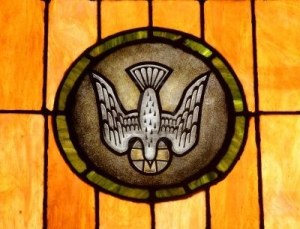 The church is no ordinary organization. We know this intuitively, as even the word ‘church’ can provoke strong reactions. Many of my postmodern peers seek deep spirituality, but resist the concept of church, preferring instead to identify as spiritual but not religious.
The church is no ordinary organization. We know this intuitively, as even the word ‘church’ can provoke strong reactions. Many of my postmodern peers seek deep spirituality, but resist the concept of church, preferring instead to identify as spiritual but not religious.
Comparing the church to other kinds of organizations is tricky. Every local church has a financial component, yet is not a business. It helps those in need, but is not strictly a non-profit. It facilitates teaching and learning, but is not a school. It offers encouragement for weary souls, but is not merely a support group for insiders. It cares about issues of public justice, but is not a political action committee (despite predictable schemes to use it as one).
Indeed, there is no organization of people quite like the church.
Lesslie Newbigin wrote, “The church lives in the midst of history as a sign, instrument and foretaste of the reign of God.” (The Open Secret, p. 110) If Newbigin was correct, the church is not just another interest group gathered to make a difference, but the community through which God does his best work. Started by the Holy Spirit as an alternative community proclaiming the gospel of Jesus’ life, death, resurrection and return, the church is Christ’s body in the world. Each local expression forms the visible community through which all lasting differences are made. Together we are a sign, instrument and foretaste of the kingdom.
That the church has made a ton of mistakes over the centuries is undeniable. Our shortcomings have been well-documented, our failings familiar to postmodern ears. Now as ever, our flawed attempts at mission hinge on divine grace and continual repentance. Since the early days, quirky collections of Jesus followers have found ways to locally gather, break bread and share life. In community, we find God’s remedy for isolation, immaturity and individualism. Without the Holy Spirit, there is no church. But without the church, there is no true communion of sinners and saints.
If anything, the church’s failures point to a greater, not lesser, need for common unity centered around Christ. When considered from a global perspective across time and cultures, the church is remarkably resilient. I cannot think of another voluntary association of people representing all ages and backgrounds that meets weekly, year-round in almost every nation on earth and has a 2000-year history of adaptation and survival.
The church has outlived the rise and fall of tyrannical empires, philosophical movements, socioeconomic conditions, cultural shifts and technological advances. And while Euro-Anglo religious structures decline in the West, the global, multicultural church has risen to unprecedented vitality in places like China, Nigeria and Brazil. According to historian Mark Noll, “Close to half of Christian believers who have ever lived are alive right now.” (New Shape of World Christianity, p. 21)
As former Christian “majorities” of North and West reverse roles with former “minorities” of South and East, I believe the global church’s best days are yet to come—not because we’re so clever in keeping it afloat with the latest techniques, but because God’s hands are all over this project.
Jan 30, 2013 @ 16:20:28
Thanks for writing this Dan!
Jan 30, 2013 @ 23:30:50
You put it so well. And when thought about, the Church really is remarkable.